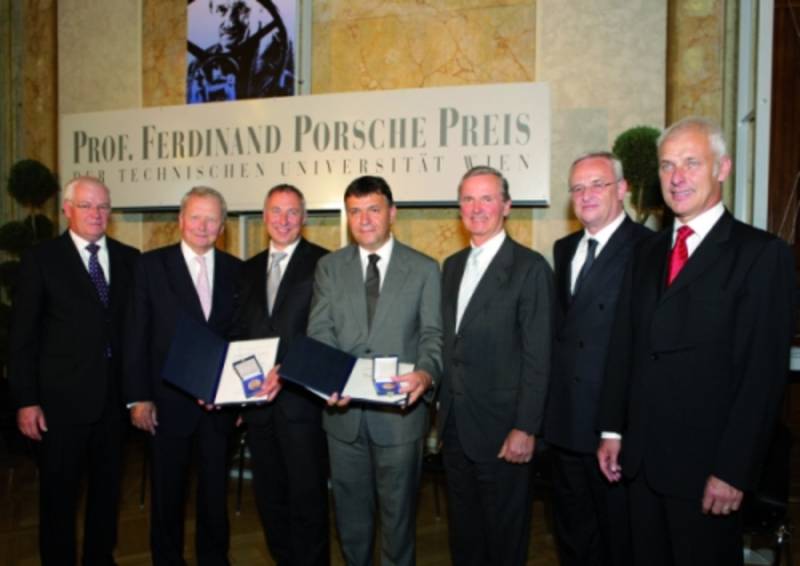The “Professor Ferdinand Porsche Prize of the Vienna University of Technology” was donated by Louise Piech in 1977 and is endowed with 50,000 Euro jointly by Porsche Holding, Salzburg, and Porsche AG, Stuttgart. The “Professor Ferdinand Porsche Prize” is awarded every two years to technicians whose inventions have had a lasting influence on the development of the automobile. The 2011 award winners are: Dr. Wolfgang Huhn (AUDI AG) and Dipl.-Ing Kamislav Fadel (Automotive Lighting) for the development and use of the new LED lighting technology in automobiles.
The two award winners played a major role in the first series application of LED lighting technology for the main headlights of a motor vehicle in 2008. The appearance of the Audi R8 super sports car was highlighted by the LED lights in an extraordinary way and signaled a technological leap forward. In his laudatory speech, Prof. Dr. Bernhard Geringer, Chairman of the Institute for Powertrains and Automotive Technology at the Vienna University of Technology and also Chairman of the jury, explained the outstanding significance of this development, “which represents a milestone in the application of forward-looking LED lighting for the automotive sector, because three advantages are exploited simultaneously: 1) a significant energy saving, 2) a massive increase in service life, and 3) extensive design freedom for vehicle design.”
The Chairman of the Executive Board of Dr. Ing. h.c. F. Porsche AG, Dr. Matthias Müller, emphasized in his laudatory speech above all the technological leap that has been achieved through the work of the two award winners. “Thanks to their persistent development work, it is now possible to install light-emitting diodes as a light source in production vehicles.” Compared with the tried-and-tested halogen and xenon headlights, LED technology provides significantly better illumination, which brings clear safety benefits when driving at night. In addition, LED headlights come closer to natural daylight. Hazards are thus detected earlier and the dazzling effect for oncoming traffic is significantly reduced.
Porsche AG boss Dr. Matthias Müller also addressed the energy savings: “With the same luminous power, an LED headlight consumes only about half as much energy as a conventional halogen or xenon lamp. In cars, this means that consumption can be reduced by as much as 0.2 liters per 100 kilometers. In view of the high demands made by customers on the consumption values of vehicles, this saving should not be underestimated.”
Dr. Müller also emphasized, above all, the new design possibilities that LED has brought to automotive design: “LEDs can be used extremely flexibly, as taillights, daytime running lights, or as low and high beams. They can be used to design unique lighting brands that lend the respective automobile brand a high recognition value, even in the dark. This much is clear: The future belongs to the light emitting diode in vehicle construction!”
